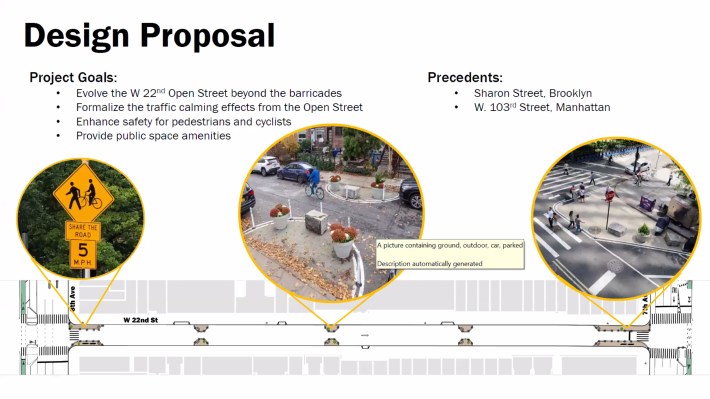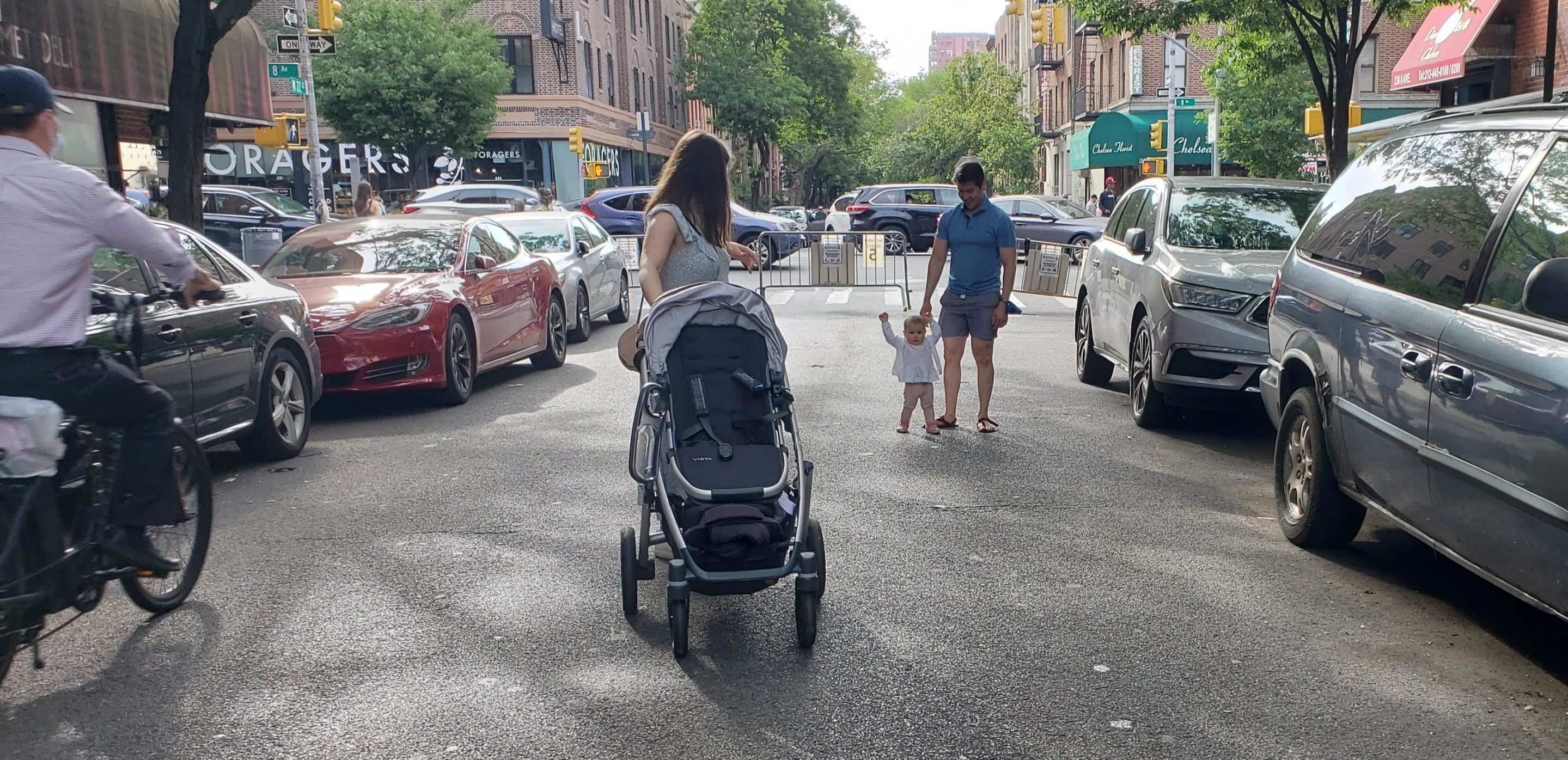The W. 22nd Street open street will get permanent traffic-calming infrastructure and low speed limits, the Department of Transportation announced on Wednesday night, capping a months-long battle waged by some residents who wanted city officials to bring back full-throttle through traffic on the block between Seventh and Eighth avenues.
Instead, the DOT will narrow the Chelsea block with painted neckdowns at the corners and three pairs of painted bump-outs, keeping some of the benefits of the open street without requiring its movable barriers, according to Kaarin Patterson, an urban designer with the agency’s public space division.
“The project goals for this area include evolving the W. 22nd Street open street beyond the barricades… formalizing the traffic calming effects from the open streets and enhancing safety for pedestrians and cyclists, and providing public space amenities,” Patterson told Community Board 4’s Transportation Committee.

The rejigging of road space is slated to happen later this summer or in the fall, and requires DOT to repurpose curbside space currently used by drivers to store about 10 private vehicles for free (the new bike corrals at the corners could actually add more parking on balance, while taking up less road space). To keep cars out of the new pedestrian spaces and beautify the area, DOT also plans to install granite blocks and planters.
The revamps will make for shorter crossings and greater visibility at the intersections — also known as daylighting — but the move also removes some commercial loading zones there.
Volunteers with the local block association set up a limited local access open street during the early days of the Covid-19 pandemic, providing more outdoor space for locals in a neighborhood where nearly nine in 10 households live car free, but still suffers the fourth-highest traffic volumes in the city.
Last fall during a workshop on the future of the strip, some locals began protesting the car-light street as an inconvenience for drivers, and they launched an online petition to kill the open street and posed angrily in the middle of the street for the New York Post late last year — a stunt that would have been significantly harder to pull off if they had to dodge 25-miles-an-hour traffic that exists on most other streets.
Early in the new year, the full community board made clear that it wasn't going to bow to those opponents and voted in favor of DOT installing permanent infrastructure to calm traffic without barriers.
When asked about the traffic impacts of previous projects, Patterson noted they were “minimal” on a similar plan they implemented on Sharon Street in Williamsburg, Brooklyn.
At Wednesday night’s committee meeting, some again voiced their opposition, with one public speaker falsely describing curbside car storage as “our parking.”
“The idea that they're going to further restrict our parking, where they have already on our block and in the surrounding blocks installed Citi Bikes, installed commercial [loading] zones, installed meters — and the encroachment on our free parking has gone far enough,” said Ben Erwin.
Another speaker said he was strongly in favor, saying it was a simple way of creating safer streets.
“This is about safety for every resident versus parking spots for a few residents. Lives are more important than free parking, it's just as simple as that,” said Samir Lavingia.
The community board committee voted unanimously to support the proposal, but added some recommendations, including moving some of the bump outs away from an indoor parking garage on the block, getting rid of one or two of the bump outs, and moving some of the bike parking spots mid-block instead of along the corner.






